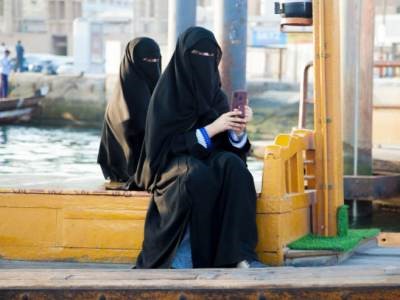Step into the realm of cultural diversity and religious inclusion as we explore the topic of Abayas in Schools, examining the significance and impact of incorporating this form of modest clothing into educational settings. With the international spotlight on cultural and religious freedom, the debate surrounding the wearing of the abaya in educational institutions is more pertinent than ever. Many argue that this traditional garment, adorned by Muslim women as a manifestation of their faith, is not only a right but an educational asset. Contrary to the arguments that label the abaya as a hindrance, the garment bolsters identity, fosters respect for diversity and contributes to a more inclusive educational environment.
A Symbol of Identity and Pride
For countless Muslim women across the globe, the abaya is not merely a garment; it’s a symbol of their rich heritage and a mark of their faith. When a Muslim student dons an abaya, she is embracing an identity that has been cherished through centuries. This is not something that should be seen as a hindrance but as a source of strength. A confident student who is secure in her identity is more likely to excel academically and contribute positively to the school community.
Nurturing Mutual Respect and Inclusion
One of the most compelling educational objectives is to prepare students to thrive in a diverse and interconnected world. By allowing abayas in schools, we are taking a concrete step toward creating an atmosphere that is inclusive and respectful of different cultures and religions. This exposure to diversity is not only beneficial for Muslim students but for their peers, as it nurtures empathy, mutual respect, and a more profound understanding of the world.
Modesty as a Choice
The choice is an empowering concept. When a student chooses to wear an abaya in school, she is making a personal decision to express her modesty. This choice should be respected and protected. Modesty can also contribute to a more focused academic environment, where students are evaluated based on merit and character, rather than external appearances.
Answering the Critics: Innovation in Abaya Fashion
Detractors argue that the abaya might restrict movement, particularly in physical education. However, the abaya has evolved in tandem with the requirements of the modern-day Muslim woman. The market is rife with athletic abayas that are tailored to facilitate movement while maintaining modesty. These innovations have made it possible for Muslim women to participate in sports at the Olympic level. There is no reason schools cannot adopt similar attire for physical education classes.
The International Paradigm: A Look at the UAE
In the UAE, a nation that has embraced modernity without compromising its cultural roots, the abaya is an emblem of national pride. It is common to see women actively engaging in all aspects of society, from being fighter pilots to CEOs, all while wearing the abaya. The schools in the UAE have exemplified that the abaya is not a hindrance but rather a component of a successful educational system.
A Call for Educational Institutions
As schools serve as the nurturing ground for future citizens, it is incumbent upon educational institutions to be at the forefront of promoting cultural and religious freedom. Let us recognize the abaya for what it truly represents – an empowering garment that carries the identity, heritage, and choice of the Muslim woman. It’s high time that schools not only permit abayas but embrace them as a valuable addition to the educational tapestry.
